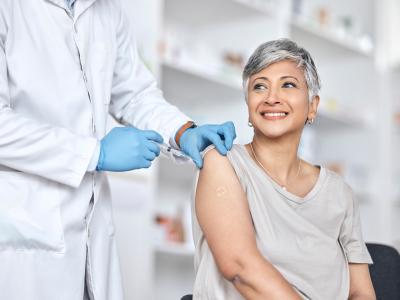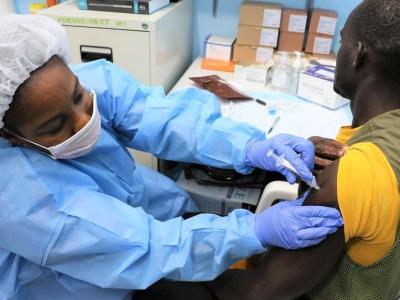Ebola virus can survive months in syringe needles, 1 week on paper money
Ebola virus (EBOV) from the West Africa outbreak survived more than 30 days in blood in syringe needles—even in hot, humid conditions— and 6 days on paper money under experimental conditions, according to a study yesterday in the Journal of Infectious Diseases.
Scientists from the University of Wisconsin and Sierra Leone dissolved EBOV in small amounts of blood in syringe needles and determined that they can survive for 70 days at room temperature and 55% humidity. They also found that the virus could survive for 190 days at 10 times the concentration (10 million plaque-forming units) in the blood stored in the needles.
To more closely replicate African outbreak conditions, they tested the higher concentrations at 90°F (32°C) and 80% relative humidity. Even in those adverse conditions EBOV survived 31.6 days in the syringe needles.
The researchers also tested virus viability on Sierra Leonean banknotes, which they said hadn't been done before. They were able to recover viable virus 6.2 days after placing blood contaminated with virus at the higher concentration on the paper currency when the notes were left in a simulated air-conditioned hospital environment. Under the above-noted hot, humid conditions, survival time dropped to 2.5 days.
The authors conclude, "All items that come into contact with EBOV-infected individuals should be handled with great care."
Jun 7 J Infect Dis abstract
Study details MRSA clone change in New York City over 18 years
The USA300 clone of methicillin-resistant Staphylococcus aureus (MRSA) has become the predominant strain of in the New York City metro area, while MRSA skin and blood infections have grown as respiratory infections have ebbed, according to a study yesterday in PLoS One that compared 1996 data with information from 2013 and 2014.
A surveillance study involving 12 metro hospitals in 1996 found that the USA100 clone—which belongs to a healthcare-acquired lineage—accounted for 42% of 270 MRSA isolates, whereas USA300 accounted for 21%. In the current study, 7 of the original 12 hospitals participated, contributing 121 MRSA isolates total for 2013/14.
Of those 121 samples, the USA300 clone, which is community acquired, was confirmed in 78, or 65%. Other community-acquired lineages were detected in only a few samples: USA700 (3 isolates), USA1100 (2), USA400 (1), USA1000 (1) and ST88 (1). The researchers detected 25 USA100 isolates (21%), with 7 USA 500 and 3 USA800 isolates constituting the other healthcare-acquired detections.
A surge of USA300 in recent years has been reported in other studies.
The type of MRSA detection also changed over the years. While in 1996 MRSA was predominately detected in the respiratory tract (44% of infections), 48% of 2013/14 detections involved skin and other soft tissue, while bacteremia/sepsis increased from 18% of detections in 1996 to 41% in the recent study.
On the upside, the change in clone dominance was accompanied by fewer isolates being resistant to certain antibiotics. Resistance to ciprofloxacin dropped from 96% to 74% between the two studies, while it fell from 88% to 31% for clindamycin and from 58% to 2% for gentamicin. The authors also note that all MRSA isolates from 2013/14 were susceptible to vancomycin, the MRSA antibiotic of choice in these hospitals.
Jun 7 PLoS One study













